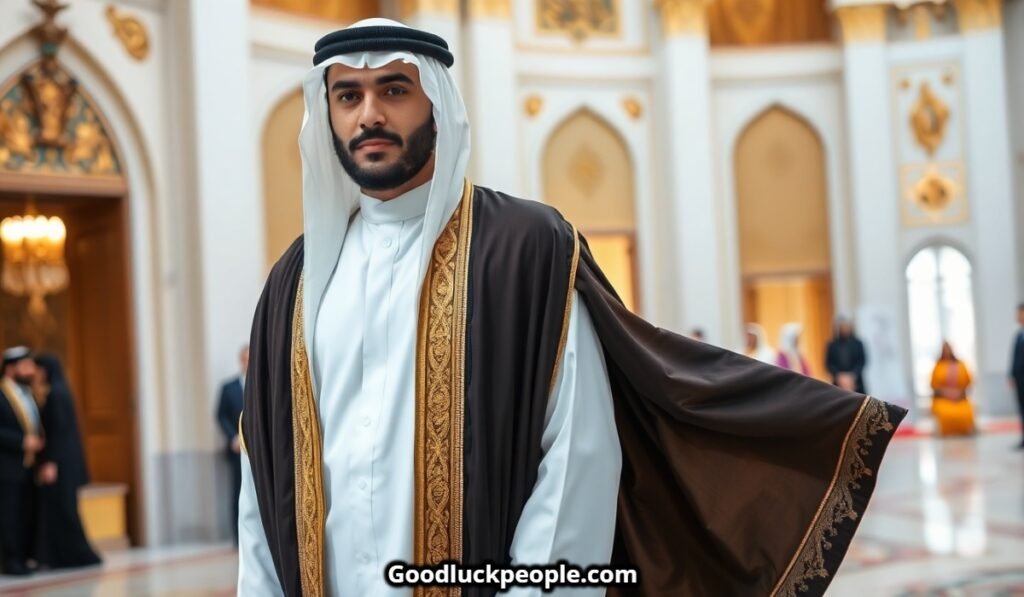When people talk about modest clothing in Islam, they often focus on women. However, modesty in dress is just as important for Muslim men. Islamic teachings emphasize humility, dignity, and cultural heritage in men’s fashion, shaping how Muslim men dress across the world.
In 2025, Islamic men’s fashion beautifully blends tradition with modern styles. This guide will explore different types of traditional Islamic clothing for men, how they have evolved, and the latest trends that allow Muslim men to stay stylish with modern fashion advice while following Islamic principles.
The Principle of Modesty in Islamic Men’s Attire
Islamic men’s clothing is deeply rooted in the principles of modesty, as taught in the Quran and Hadith.
Quranic and Hadith Guidance on Modest Dressing
The Quran provides clear guidance on modesty for men. In Surah An-Nur (24:30), Allah commands believing men to lower their gaze and dress modestly:
“Tell the believing men to lower their gaze and guard their modesty: that is purer for them. Surely Allah is All-Aware of what they do.” – Qur’an 24:30
Similarly, Surah Al-Ahzab (33:35) highlights the importance of modesty in both behavior and dress for men and women alike:
“For Muslim men and women, for believing men and women, for devout men and women… for men and women who guard their chastity… Allah has prepared for them forgiveness and a great reward.” – Qur’an 33:35
The Hadiths also provide valuable insights into men’s dress code. Prophet Muhammad (SAWS) taught that men must cover their awrah (the area from the navel to the knee) properly. He also warned against extravagance and arrogance in dressing. Additionally, Islamic teachings prohibit men from wearing gold and silk, as these are reserved for women, maintaining a distinct masculine identity.
Key Characteristics of Islamic Men’s Clothing

- Loose-fitting garments that do not reveal body shape
- Avoidance of flashy or extravagant clothing
- Preference for high-quality, breathable fabrics
- Clothing should not drag below the ankles
Traditional Islamic Men’s Clothing Around the World
Islamic men’s clothing varies across different regions while following the same core principles of modesty. Here are some of the most popular traditional outfits worn by Muslim men worldwide:
Common Islamic Clothing for Men

- Thobe (Thawb) – A long, ankle-length robe commonly worn in Arab and African regions. In Gulf countries, it is known as a dishdasha or kandura.

- Shalwar Kameez – A tunic (kameez) with loose trousers (shalwar), popular in South Asia, including Pakistan, India, and Bangladesh.

- Izar – A wide cloth wrapped around the waist, similar to a sarong, worn in Yemen, Oman, UAE, and parts of Africa.

- Bisht – A formal cloak worn over the thobe, often associated with leadership and special occasions like weddings and religious events.
Headwear in Islamic Fashion
- Ghutra & Egal – A square or rectangular headscarf (ghutra) held in place by a rope band (egal). Styles vary by region, with white, red-and-white, and black-and-white checkered patterns being common in Gulf countries.
- Turban – A long cloth wrapped around the head, symbolizing wisdom and honor, worn in North Africa, Iran, and Afghanistan.
- Kufi Cap – A small, rounded cap often worn for prayers and casual outings. It comes in embroidered, knit, and plain designs.
Undergarments & Sleepwear
- Serwal – Loose-fitting white cotton pants traditionally worn under the thobe or as sleepwear.
Cultural and Regional Variations in Men’s Islamic Clothing
- The Gulf countries favor thobes and ghutras.
- South Asian men wear shalwar kameez.
- Yemen and Oman are known for their izars.
- Moroccan men prefer the djellaba.
Top Muslim Men’s Fashion Trends for 2025

Fashion is always evolving, and 2025 is no exception. Here are some of the biggest trends in Islamic men’s fashion this year:
- Embroidered Thobes – Traditional thobes with intricate embroidery on collars and sleeves. A touch of gold or silver embroidery adds a luxurious feel.
- Color-Blocked Jubbas – Jubbas featuring bold, contrasting colors like navy-charcoal or blue-turquoise.
- Minimalist Jalabiyas – Simple, relaxed-fit jalabiyas in solid colors like black, grey, or deep blue for a sophisticated look.
- Relaxed-Fit Kurtas – Long tunics that pair well with jeans or chinos for casual wear.
- T-Shirts & Hoodies with Islamic Motifs – Modern casual wear featuring Arabic calligraphy, Islamic quotes, and geometric patterns.
- Long Shorts & Oversized Shirts – Knee-length shorts paired with oversized button-down shirts for a comfortable summer outfit.
- Wide-Leg Trousers & Joggers – Loose-fitting bottoms for a modern yet modest appearance.
Accessories to Elevate Men’s Islamic Fashion

Accessories add the finishing touch to any outfit. In 2025, these are the must-have items for Muslim men:
- Scarves – Yemeni scarves with intricate embroidery add a stylish and traditional touch.
- Caps – Islamic-themed caps featuring Arabic calligraphy or subtle embroidery.
- Jewelry (Non-Gold) – Leather-strapped watches or engraved necklaces featuring Quranic verses.
- Non-Silk Ties – Wool or cotton ties with subtle Islamic patterns for formal occasions.
Conclusion
Modesty is at the heart of Islamic men’s fashion. By embracing traditional and modern styles, Muslim men can confidently express their faith while staying fashionable. Whether you prefer a classic thobe, a trendy embroidered jubba, or a casual hoodie with Islamic motifs, there are endless ways to dress modestly and stylishly in 2025.
Ready to upgrade your wardrobe? Explore our latest collection and find the perfect outfit that suits your style and values. Stay updated on new arrivals and exclusive designs by joining our community!

